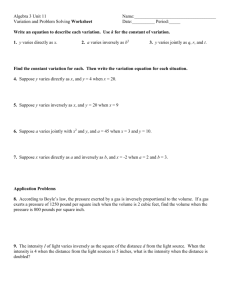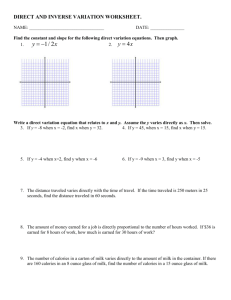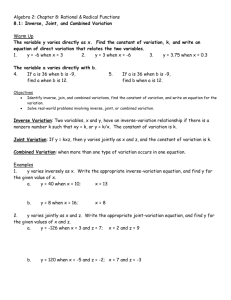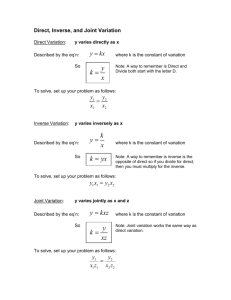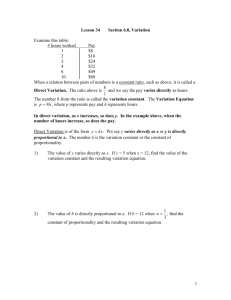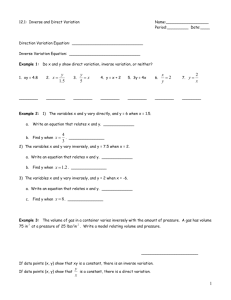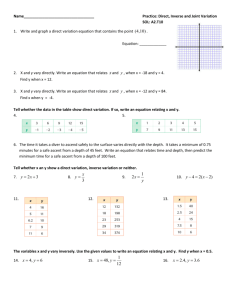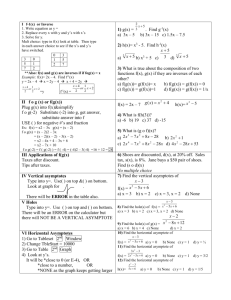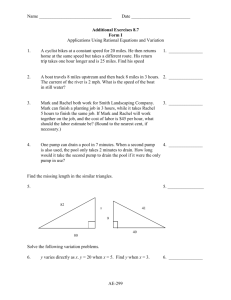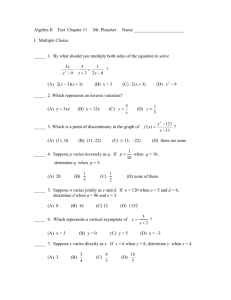Name______________________________________________
advertisement
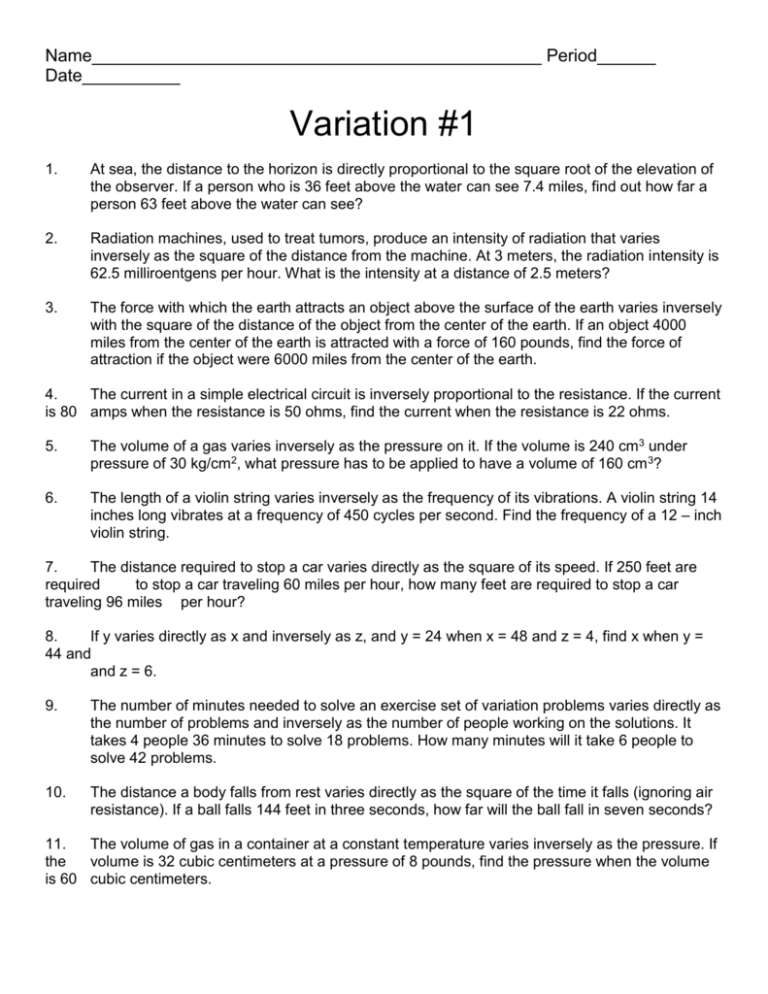
Name______________________________________________ Period______ Date__________ Variation #1 1. At sea, the distance to the horizon is directly proportional to the square root of the elevation of the observer. If a person who is 36 feet above the water can see 7.4 miles, find out how far a person 63 feet above the water can see? 2. Radiation machines, used to treat tumors, produce an intensity of radiation that varies inversely as the square of the distance from the machine. At 3 meters, the radiation intensity is 62.5 milliroentgens per hour. What is the intensity at a distance of 2.5 meters? 3. The force with which the earth attracts an object above the surface of the earth varies inversely with the square of the distance of the object from the center of the earth. If an object 4000 miles from the center of the earth is attracted with a force of 160 pounds, find the force of attraction if the object were 6000 miles from the center of the earth. 4. The current in a simple electrical circuit is inversely proportional to the resistance. If the current is 80 amps when the resistance is 50 ohms, find the current when the resistance is 22 ohms. 5. The volume of a gas varies inversely as the pressure on it. If the volume is 240 cm3 under pressure of 30 kg/cm2, what pressure has to be applied to have a volume of 160 cm 3? 6. The length of a violin string varies inversely as the frequency of its vibrations. A violin string 14 inches long vibrates at a frequency of 450 cycles per second. Find the frequency of a 12 – inch violin string. 7. The distance required to stop a car varies directly as the square of its speed. If 250 feet are required to stop a car traveling 60 miles per hour, how many feet are required to stop a car traveling 96 miles per hour? 8. If y varies directly as x and inversely as z, and y = 24 when x = 48 and z = 4, find x when y = 44 and and z = 6. 9. The number of minutes needed to solve an exercise set of variation problems varies directly as the number of problems and inversely as the number of people working on the solutions. It takes 4 people 36 minutes to solve 18 problems. How many minutes will it take 6 people to solve 42 problems. 10. The distance a body falls from rest varies directly as the square of the time it falls (ignoring air resistance). If a ball falls 144 feet in three seconds, how far will the ball fall in seven seconds? 11. The volume of gas in a container at a constant temperature varies inversely as the pressure. If the volume is 32 cubic centimeters at a pressure of 8 pounds, find the pressure when the volume is 60 cubic centimeters.
